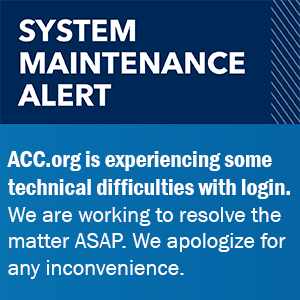Outcomes of Peri-Infarct Ischemia Detected by Stress CMR
Quick Takes
- Peri-infarct ischemia refers to regions of ischemia that are adjacent to regions of scar.
- Peri-infarct ischemia can be identified on stress CMR imaging.
- Peri-infarct ischemia is independently associated with increased rates of acute MI and CV death, even after adjustment for risk factors, systolic function, and amount of total ischemia and scar.
Study Questions:
What is the prognostic impact of peri-infarct ischemia on stress cardiovascular magnetic resonance (CMR) imaging?
Methods:
This was a retrospective multicenter registry study within the multicenter SPINS (Stress CMR Perfusion Imaging in the United States) study. Peri-infarct ischemia was considered present if any segment adjacent to an infarcted segment was ischemia. Infarcted segments were defined based on late gadolinium enhancement imaging. The primary outcome was the composite of acute myocardial infarction (MI) and death from cardiovascular (CV) causes (CV death). Secondary endpoints included components of the primary outcome, hospitalization for unstable angina, hospitalization for heart failure, and coronary artery bypass surgery (>6 months after CMR). Cox regression was used to adjust for clinical risk factors, left ventricular systolic function, amount of ischemia, and infarct size.
Results:
A total of 3,915 participants were included and had follow-up information. Most patients had hypertension (66%) or dyslipidemia (57%). Nearly half of participants were female (45%) and the ages were typical of stress testing populations (mean 61 years). Ischemia was present in 19% of participants and peri-infarct ischemia was present in 9.8%. Peri-infarct ischemia was associated with a 1.72-fold increased risk of acute MI or CV death (p < 0.001), fully adjusted. Individuals with peri-infarct ischemia had a 6.5% per year rate of the primary composite endpoint compared to 0.9% for those without peri-infarct ischemia.
Conclusions:
The authors report that peri-infarct ischemia is a powerful predictor of adverse CV outcomes.
Perspective:
This is a well-done multicenter study demonstrating that peri-infarct ischemia is associated with worse prognosis, even after accounting for total amount of ischemia and scar with precise CMR measures. This adds to substantial literature from other modalities (including nuclear perfusion imaging) and smaller CMR studies evaluating this question. Potentially, the presence of scar and ischemia jointly is particularly high risk due to both atherosclerotic and arrhythmic mechanisms. This study does not directly address that question, but this will likely be explored in future studies.
Clinical Topics: Noninvasive Imaging, Magnetic Resonance Imaging
Keywords: Magnetic Resonance Imaging, Myocardial Ischemia
< Back to Listings

